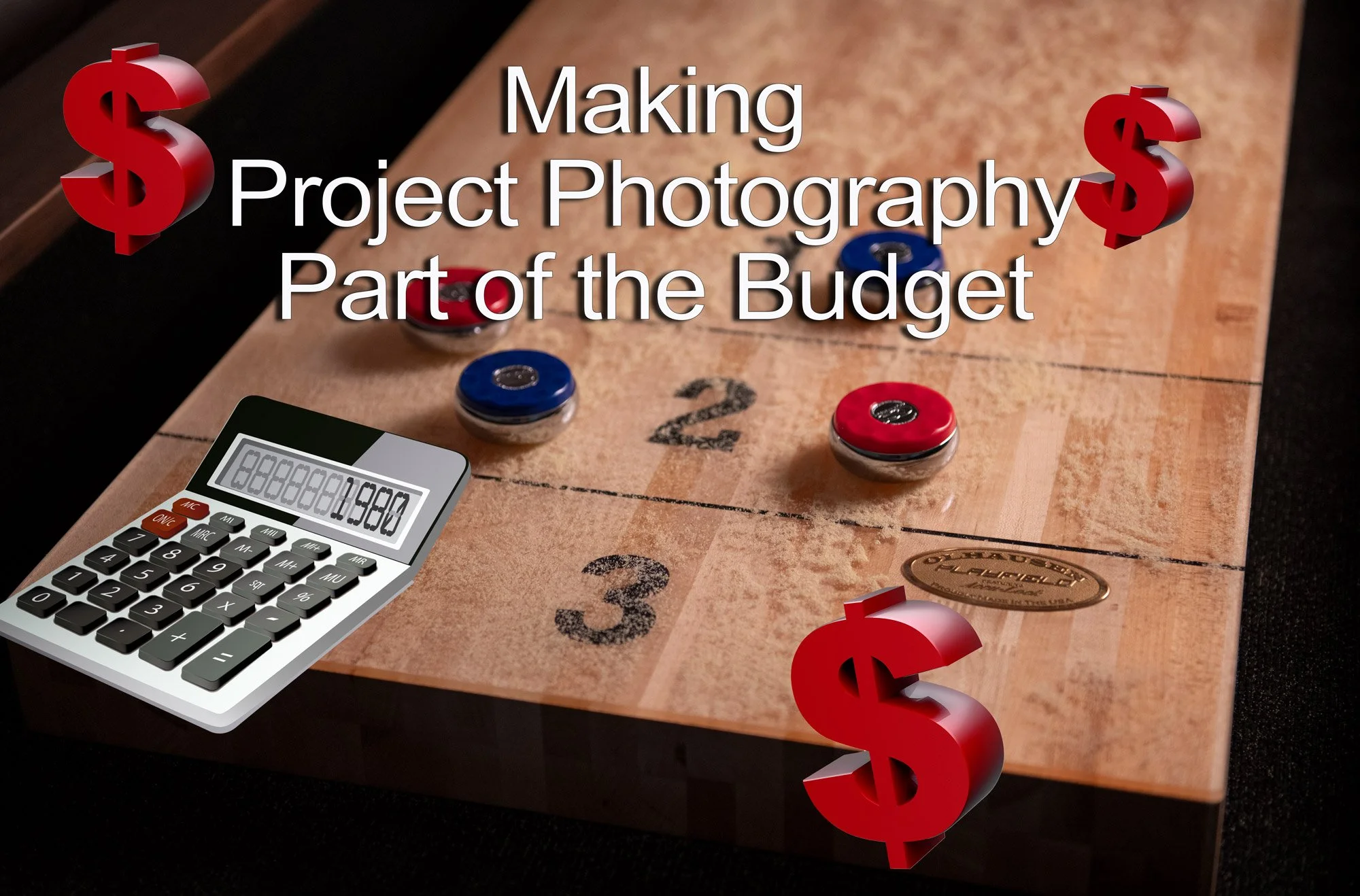Making Project Photography Part of the Budget
Why would you make photography a line item in your budget?
Many builders (and designers or architects) hesitate to add photography to a project budget, thinking clients will see it as an unnecessary expense. In reality, most clients appreciate it. It gives them something meaningful in return: professional images of their finished space that they can share and take pride in. When you frame it as part of the full experience, not a marketing add-on, it becomes a value, not a cost.
Photography should be treated as the final step of the build, just like touch-ups or cleaning. Once the last trade has packed up, the photographer steps in to capture the finished story. Planning for it early allows you to schedule at the right time of year and in the best light.
How to Work It Into the Budget
1. Decide where the cost lives.
You can show photography as a clear line item in the proposal or fold it quietly into overhead. Either way, consistency matters. Make it a standard part of your process.
2. Set a predictable range.
Many firms budget for photography, usually between $1,500 and $7,000, depending on scale. That covers planning, a professional shoot, and the final edited images.
3. Schedule it at the right time.
The best photos happen after the client has moved in, once furniture, artwork, and décor bring the design to life. For exteriors, wait until landscaping matures, even if that means the following spring.
4. Define what is included.
Set expectations for image count, file types, turnaround, and usage rights so everyone knows exactly what they are getting.
5. Track and reuse.
A single shoot can fuel marketing, awards, and social content for years. Over time, you will see that consistent photography is not a cost. It is an investment that keeps paying back.
Coordinating with Other Project Partners
Most projects involve more than one professional. The builder, designer, and architect all benefit from the photos, but it is easy for photography to fall through the cracks if no one takes the lead. Usually, I am brought in by one party, so it’s natural for that party to take the lead.
The best approach is to bring it up early in the project. Talk openly about who will schedule, fund, and manage the shoot. You can either:
Have one party handle it and share the images with everyone
Split the cost among team members
Or coordinate timing if one partner already has a photographer
Regardless of the setup, clarify usage rights and credit so that each firm can use the images freely. When photography becomes a shared effort, everyone wins, and the project gets documented professionally.
When Clients Push Back
If a client wants to cut photography, stay flexible. Reframe it as documentation for them, offer a smaller session, or cover it yourself when the project is worth it. Always clarify rights if you are funding the shoot, and circle back after move-in when enthusiasm often returns.
Closing Thought
Budgeting for photography is about honoring the craftsmanship and design you have already created. When you plan for it early, coordinate with your partners, and treat it as part of the process, it becomes one of the smartest and most rewarding investments you can make.

